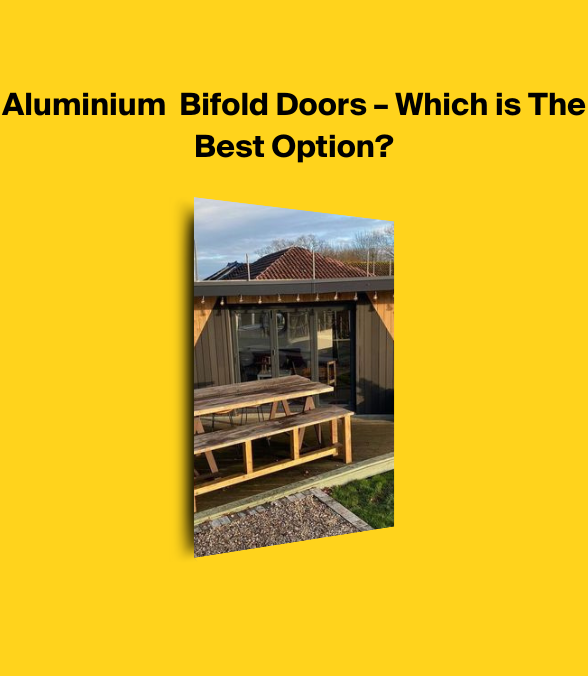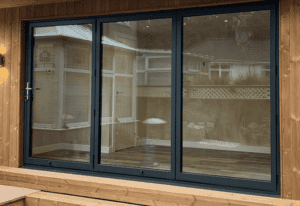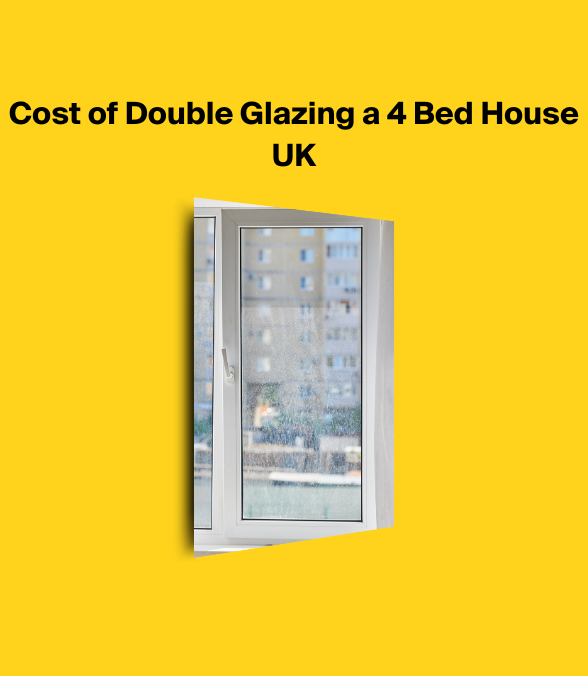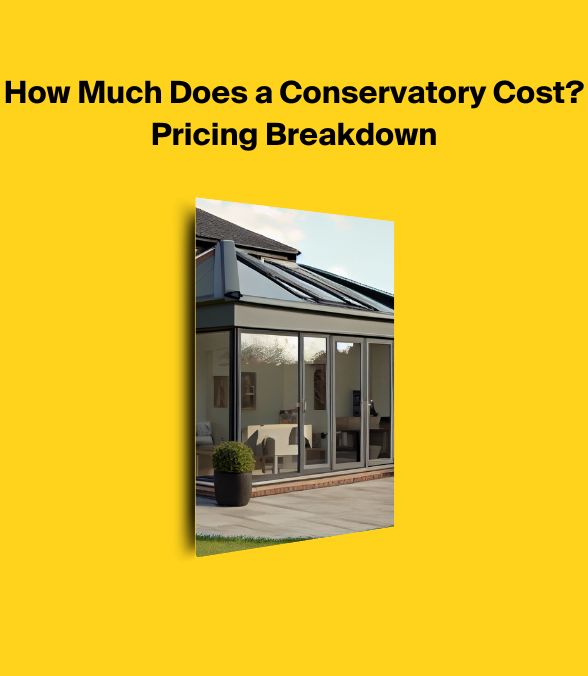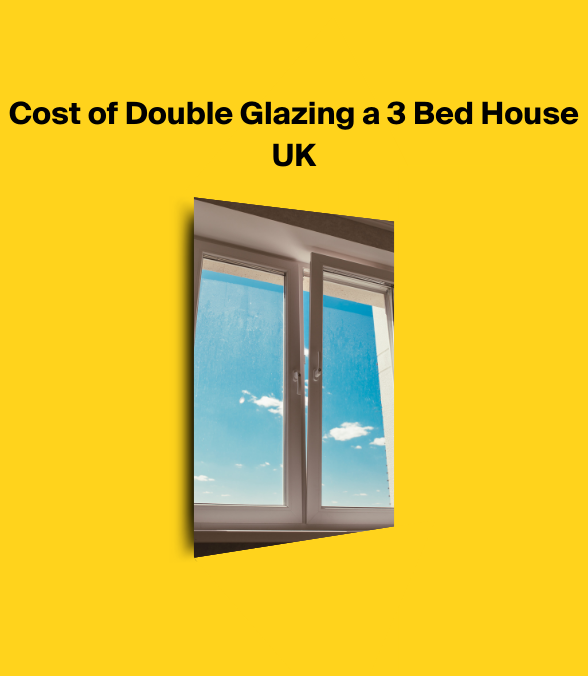uPVC vs Aluminium Bi-folding Doors - Comparison Guide
Bifold doors are becoming an increasingly popular feature in homes and offices today. Bifold doors help open up internal spaces and create a lighter, more seamless flow to the home or workspace.
External bifolds welcome natural light and open the interior to the outside garden, patio or other attractive space.
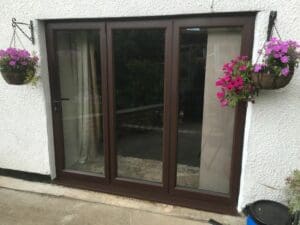
Advances in materials and design have inspired new creative possibilities and made French doors seem a tad old-fashioned.
Fitting bifold doors can increase your home's value.
When discussing bifold doors, there is often debate around uPVC or aluminium. Which one is the best material for your new fixture?
In this article, we explore the advantages of these two high-quality materials to see if there is indeed a clear bifold door winner.
Understanding Aluminium And uPVC In Bifold Doors
Bifold, or bi-folding, doors are a type of door system that consists of several panels that fold in on themselves when opened to create a wide opening.
Bifolding doors are typically made from durable, lightweight frames, with the panels usually consisting of glass or other materials such as wood or uPVC.
Aluminium bifold doors and uPVC bifold doors are the two leading choices for modern bi-folding door systems. Both are sleek and resilient and deliver aesthetic, insulation and energy benefits.
Let's take a brief look at their base properties:
- What is uPVC? - uPVC stands for Unplasticised Polyvinyl Chloride. It is a type of rigid plastic commonly used for windows, doors, and other building materials. Unlike PVC, uPVC does not contain plasticisers, making it more resistant to chemicals, sunlight, and weathering.
- What is aluminium? - Aluminium is a lightweight, silvery-white metallic element that is used in a wide range of applications due to its strength, durability, and good thermal and electrical conductivity.
Which Lasts Longer- uPVC Bifolds Or Aluminium Bifold doors?
A well-made and well-maintained aluminium bifold door can generally last anywhere from 20 to 30 years and more.
With proper care and maintenance, including periodic cleaning and lubrication, the door's lifespan can be extended further.
An equally well-made and maintained uPVC bifold door should generally also last into its 20s. Its lifespan can be extended with good care and maintenance.
In the final analysis, the uPVC bifold door is likely to need replacing sooner than its aluminium counterpart. This just speaks to the remarkable long-term durability of aluminium.
Like the sound of aluminium? Read our guide to the best bifold doors and brands in the UK now for more information
Price Comparison Between Aluminium And uPVC Bifolds
Price is invariably a key factor in such decisions, so let's discuss this upfront.
Aluminium bifold doors cost more than uPVC bifold doors as aluminium is the more expensive material.
The initial cost of an aluminium door system will be higher, as this comparison indicates (these are only estimates):
Aluminium Anthracite Grey
- 1.8m - £1,929
- 2.4m - £2,749
- 3.0m - £2,959
- 3.6m - £3,669
uPVC Anthracite Grey
- 1.8m - £1,749
- 2.4m - £1,999
- 3.0m - £2,249
- 3.6m - £2,499
This suggests that uPVC doors are the most cost-effective. And in the immediate term, this is true. However, as this is an investment, a long-term view must also be taken.
Both aluminium and uPVC are durable and long-wearing. But you can expect uPVC frames to pack up first. In most cases, uPVC doors will need to be replaced sooner than aluminium frames.
The guarantee period on aluminium doors is often longer than that covering uPVC doors. You may be able to get a 15-year warranty on aluminium as opposed to 10 years on uPVC.
Taking account of the typically longer life and greater warranty period, the cost equation tilts in aluminium's favour over the medium to longer term.
Read more here in our bifold door cost guide.
Strength of uPVC vs Aluminium Bifold Doors
Which is stronger- uPVC or aluminium? Both of these materials are very strong. uPVC is manufactured using vinyl polymer bonded with chlorine.
This creates a non-plastic compound robust enough to be combined with steel.
Aluminium's chemical process combines high-strength alloy and additives to create a material strong enough to be used in constructing skyscrapers.
In an outright contest, uPVC can't quite match aluminium's innate strength. Aluminium has a formidable weight-to-strength ratio which makes it the perfect solution for exterior doors that will be subject to active, heavy use.
The best aluminium and uPVC bifold doors have no problem carrying double and triple-glazing insulation.
Resistance And Wear
Aluminium is a durable material. A professionally built, treated and installed aluminium bifold door should be highly resistant to corrosion, rust and wear.
That's not to say corrosion is never a factor, especially in harsh conditions and coastal areas. A powder-coated finish goes a long way to prevent this.
Warping isn't as common with aluminium bi-folding doors, making them a great option for warmer countries or even getting a summer house bifold door.
Even powder-coated aluminium bifolds can sometimes receive a scratch. This isn't only unsightly, but a scratch can strip off the coating which again introduces the possibility of corrosion.
However, modern finishes, coating, and maintenance help to eliminate this concern.
uPVC is designed to be resistant to chemicals, sunlight, and wear. It's durable in most climates and has a fairly high tolerance before it warps or bends.
Over time and continued exposure to extreme weather, some warping may become inevitable. This will affect the door's performance.
uPVC is more likely to present as worn over time when compared to aluminium. Sometimes uPVC, especially the plain white look, gets a pink or yellow tinge from continuous UV exposure.
There are colour and finish options which will help to remedy these issues.
Colours And Style
When you discuss colour, you might hear the term RAL.
This refers to the RAL Classic system, the industry-recognised range applying to colours for powder coating, varnishes, and plastics.
The powder-coated finish applied to aluminium doors can be made in a wide range of RAL colours.
You may prefer the sleek contemporary look. In this case, there are many palettes to choose from. Alternatively, you may fancy a bold red or avocado green.
Your professional door manufacturer will almost certainly be able to oblige.
Previously uPVC fixtures weren't as readily customisable as aluminium, but today uPVC doors can also be enhanced by many RAL colours and finishes.
A wood-effect finish can also be achieved if that is an option that appeals.
However, with uPVC's distinct standard look, it's harder to achieve the same level of warmth and stylish aesthetics as with aluminium.
Aluminium just looks more stylish, particularly as slimmer frames are possible with aluminium.
Sightlines Of Aluminium Bifolds vs uPVC Bifold Doors
The view through the door is definitely one of the most important aspects you need to consider when weighing uPVC or aluminium.
Sightline (also called door 'stiles') is the term which refers to the non-glass section of bifold doors. The greater the glass element, the more open and impressive the view.
Some people may be happy to have stylish sightlines incorporated as part of the aesthetic, but most people prefer to maximise the view.
Because aluminium is stronger than uPVC, it means that in a straight comparison, aluminium allows you more glass relative to the frame.
Slim and ultra-slim frames are really pushing the design to give you terrific views with a bare minimum sightline. This can all be realised without compromising stability or security.
Aluminium is leading the way in this department. Generally, aluminium bi-folds have smaller sightlines than their uPVC equivalents.
Security Features
Both aluminium and uPVC options are fully geared to domestic and commercial security concerns. It may be necessary to ensure higher level security relating to door panels.
Aluminium bifold doors and uPVC bifold doors are strong enough to support fortified, protective glass, PVC and other panels.
Doors can be fitted with a number of lock options, including twin-point locks, euro cylinders and deadbolt locks.
Child locks can also be engaged, as well as additional safety features like fingerprint scanners and bulletproof glass. Read more about bifold door security here in our guide.
Noise Factor
Noise is another key performance indicator that should be factored into the aluminium vs uPVC decision.
Aluminium frames tend to transmit sound more easily due to their metal construction.
This can make aluminium bifolding doors noisier than others. If the door is fitted with double or triple glazing, this goes a long way to mitigate external noise.
A uPVC bifold door is naturally better with sound insulation than aluminium. This is one of the uPVC's strengths and makes it an ideal choice for patio doors that may face out to a busy road or other noise source.
Stability And Strain
When a bifold door is frequently opened and closed by many people, and robustly handled, inevitable strain is placed on the hinge mechanisms over time. Especially for large openings with many panels.
Aluminium bifold doors have an edge here due to superior strength. Also, a large bifold door will be lighter in aluminium than uPVC, making opening and closing easier.
There will be less force and internal strain on each of the panels.
Aluminium is recognised as better suited to doors with a large number of panels.
Maintenance Of Your Bifold Doors
There is not much to choose between the two materials when it comes to maintenance. Aluminium bifold doors require very little maintenance.
They are simple to clean, and their durable finish is sure to keep up appearances over time.
uPVC bifold doors are similarly easy enough to maintain, requiring the occasional cleaning with soap and water.
Standard white uPVC doors may require more regular attention to prevent dirt and grime from staining the plastic. If dirt becomes too engrained, it may call for specialist cleaning products.
Thermal efficiency
Both uPVC and aluminium offer excellent levels of insulation. Aluminium is more of a conductor than uPVC, so is more prone to allow heat and cold to pass through.
This situation is neatly overcome by simply installing thermal breaks in the door to make the system more energy efficient.
The polyamide thermal break installed in modern doors acts as a barrier to reduce conductivity and energy flow. The result is improved energy efficiency.
Thermal breaks together with glazing ensure aluminium frames have a negligible effect on heating, cooling and fuel bills.
uPVC bifold doors are recognised for their excellent thermal efficiency and insulation, which help control heating and cooling costs.
Environment Impact
Both aluminium and uPVC last for many years, which lowers environmental impact over their lifetimes. They also have good energy efficiency which is another environmental plus.
Aluminium is a highly recyclable material. Recycling aluminium takes only about 5% of the energy compared to producing new aluminium, making it an energy-efficient and cost-effective process.
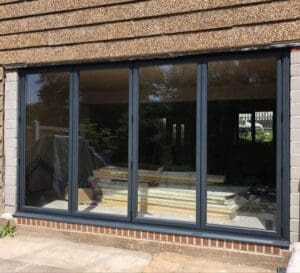
uPVC can also be recycled, and many manufacturers have active recycling programmes, effectively creating new products through the process.
The recycling rates of uPVC are shown to be lower than that of aluminium recycling.
uPVC uses more energy in its manufacturing process, and the amount of non-biodegradable uPVC and PVC lying in landfills is a concern.
In conclusion, aluminium typically lasts longer, requires less energy to manufacture, and has a better recycling record.
This gives aluminium an eco-friendly advantage.
FAQs
Are wood bifold doors cheaper than uPVC bifold doors?
uPVC is usually the most affordable bifold system. A good quality timber bifold frame typically costs more than its uPVC equivalent, though there may be cheap wood options at the budget end.
How strong is aluminium?
Aluminium is lightweight but strong. It's not quite as strong as steel but has an excellent strength-to-weight ratio. This is why it's widely used in the manufacture of aircraft, skyscrapers, and even shark cages.
Conclusion
In this head-to-head comparison, we can see that aluminium dominates most of the categories.
Aluminium Wins:
- Lifespan
- Environment
- Sightlines
- Strength
- Resilience and wear
- Style and customisation
- Stability and strain
uPVC Wins:
- Noise insulation
- Thermal efficiency
The initial price of uPVC is lower, but as discussed, the cost differential narrows when we take into account lifespan, wear, and guarantees.
Whether you choose uPVC bifold doors or an aluminium system will depend on your personal preference, needs and resources. We believe though that aluminium is currently the best overall choice for bifold doors.

